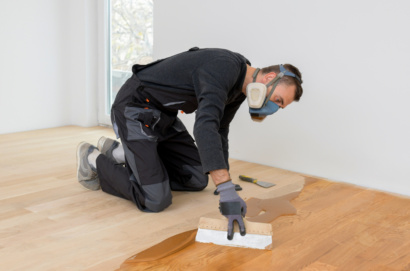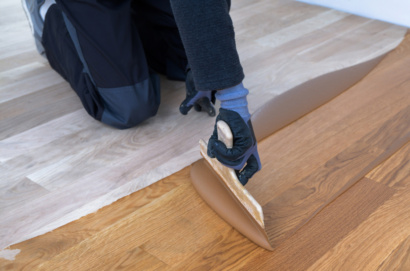A home adorned with stunning hardwood floors exudes timeless elegance and warmth. However, maintaining these floors’ allure requires periodic refinishing to restore their luster and durability. If your once-magnificent hardwood floors have lost their charm and are in dire need of rejuvenation, fear not! FloorU’s comprehensive guide will walk you through various hardwood floor refinishing techniques, helping you transform your drab floors into fab masterpieces.
Understanding the Need for Refinishing Hardwood Floors
Before diving into the refinishing techniques, it’s crucial to comprehend why hardwood floors require this attention. Over time, wear and tear, scratches, fading, or water damage can mar the surface of your hardwood floors, diminishing their visual appeal. Refinishing not only restores their beauty but also extends their lifespan, protecting them from further deterioration.
Traditional Sanding
The traditional method of hardwood floor refinishing involves sanding, a process that strips off the existing finish, smoothes out imperfections, and prepares the surface for a new finish. This technique is effective for deep scratches, dents, and uneven surfaces. However, it generates a substantial amount of dust, requiring meticulous cleanup. It’s advisable to use a drum sander for larger areas and an edger for corners and edges.
Chemical Refinishing
For a more eco-friendly and less invasive approach, chemical refinishing is gaining popularity. This method involves using specialized chemicals to dissolve the existing finish, eliminating the need for extensive sanding. Chemical refinishing is ideal for floors with minor surface damage or when sanding is not feasible, such as with engineered hardwood floors. It’s essential to follow safety precautions and manufacturer guidelines when using these chemicals.
Buff and Recoat
The buff and recoat method is a quicker and less intensive refinishing technique suitable for floors with minor surface scratches and dullness. It involves lightly abrading the existing finish with a buffer or polisher and applying a new coat of finish. This method revitalizes the shine and protects the floor without fully stripping the existing finish. It’s an excellent option for regular maintenance or as a preventive measure to prolong the floor’s life.
Choosing the Right Technique for Your Floors
Determining the most suitable refinishing technique depends on various factors:
- Floor Condition: Assess the extent of damage and wear on your floors. Minor scratches might only require a buff and recoat, while deep scratches and extensive damage may necessitate sanding or chemical refinishing.
- Type of Hardwood: Different types of hardwood respond differently to refinishing techniques. Solid hardwood floors typically tolerate multiple sanding sessions, while engineered hardwood has a thinner wear layer, limiting the number of times it can be sanded.
- Time and Budget: Consider the time and budget constraints for your refinishing project. Sanding may be more time-consuming and expensive due to equipment rental and labor costs, whereas buffing and recoating can be a more budget-friendly and quicker option.
- DIY vs. Professional Help: Assess your skill level and the complexity of the refinishing process. While buff and recoat methods might be suitable for DIY enthusiasts, sanding and chemical refinishing often require professional expertise to achieve optimal results.
Preparation and Aftercare
Regardless of the chosen technique, proper preparation is vital. Clean the floors thoroughly, repair any damages, and ensure the area is well-ventilated. After refinishing, allow sufficient drying time before moving furniture back in and resuming regular foot traffic. Implement a maintenance routine, including regular cleaning and using protective pads on furniture legs to prevent future damage.
In conclusion, transforming your worn-out hardwood floors into stunning focal points involves selecting the right refinishing technique tailored to your floor’s needs. Whether opting for traditional sanding, eco-friendly chemical refinishing, or a quick buff and recoat, restoring your hardwood floors will breathe new life into your space, reinstating its elegance and charm for years to come. For professional hardwood floor refinishing in northern Virginia, contact FloorU today for a free estimate.




